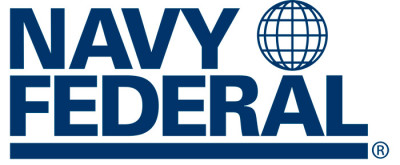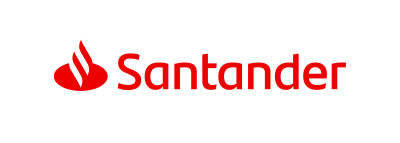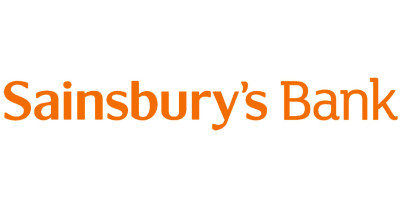Home Improvement
Best Home improvement loans

LightStream provides an attractive option for personal loans, especially if you have a strong credit history. With competitive interest rates and a lack of fees, it's a borrower-friendly choice.
Pros and cons

Discover stands out for several reasons. First, it offers unsecured personal loans, which means borrowers don't have to provide collateral like a car or savings account.
Pros and cons

Navy Federal extends another proprietary loan option called Homebuyers Choice, tailored for nonmilitary borrowers who are eligible for credit union membership (including civilian employees of the Department of Defense).
Pros and cons

Wells Fargo provides various small-business loans, including secured and unsecured business lines of credit, commercial real estate purchase and refinancing loans, commercial real estate equity loans, lines of credit, and health care practice financing.
Pros and cons

HSBC offers personal, premier, car, home improvement, and debt consolidation loans with competitive rates and exclusive premier benefits.
Pros and cons

M&S Bank presents a diverse range of loans that offer flexibility in both borrowing amounts and repayment periods, featuring representative APRs.
Pros and cons

Santander offers various loans for personal needs, cars, home improvements, consolidating debts, and special occasions.
Pros and cons

Sainsbury's Bank, a subsidiary of the esteemed UK supermarket, offers a diverse range of financial services, including loans, credit cards, insurance, and savings accounts, with a focus on customer convenience and competitive solutions.
Pros and cons

Halifax's personal loans are tailored for various purposes, such as major purchases or consolidating debts, without the requirement of collateral.
Pros and cons

Zopa Bank, renowned for its tech-savvy approach combined with financial acumen, is committed to offering simple, transparent, and customer-focused financial products.
Pros and cons
Comprehensive Guide to Home Improvement Loans
Home improvement loans are, for sure, a perfect financial tool for a homeowner who wishes to renovate, repair, or upgrade their property. This guide will give you comprehensive knowledge about the loans, their kinds, their benefits, and how you may manage them effectively. If you are just getting started or want to explore your options, then this guide is customized to have you make informed decisions on the subject.
Understanding Home Improvement Loans
Personal home improvement loans are a financial solution that allows owners to leverage finances for renovations, repairs, and upgrades of homes. It may be used for any work in your home, from minor repairs to major renovations. Therefore, it provides the necessary funds to make your home more comfortable, functional, and valuable. Home improvement loans respond to the needs of homeowners to change their living quarters for the better without having to use up their savings.
Why Opt for a Home Improvement Loan?
Opting for a home improvement loan allows homeowners to undertake projects that can significantly increase their property's value. According to the Home Improvement Research Institute, nearly 50% of homeowners prefer renovating their current homes over moving to a new property due to the high costs associated with buying and relocating (iPropertyManagement.com). Improvement loans, in return, are available with very flexible terms that may be molded according to a person's financial circumstances.
As we now know why these loans are so beneficial, let's examine the many types available.
Types of Home Improvement Loans Available
There are many personal home improvement loans for different needs and financial conditions. Knowing the difference between the various loan types can help a lot in picking the appropriate alternative for your particular project and financial condition.
Secured Versus Unsecured Home Improvement Loans
There are primarily two types of these loans: secured and unsecured. In the case of secured home improvement loans, collateral, usually your home, is required to back the loan. Because the risk is lesser, the interest rates are generally lower and borrowing limits higher. On the other hand, unsecured home improvement loans do not require any collateral; however, the interest rate will be higher and the borrowing limit lower.
Secured loans provide lower interest rates but increase the risks because of the requirement for collateral.
Personal Loans for Home Improvement
These personal loans are the other most popular way of sourcing funds. They are unsecured and have many different purposes, including the renovation of a house. Personal loans for home improvement offer flexibility and a quick application process, making them suitable for shorter or urgent projects. The interest rates of such personal loans will be based on the credit score and the respective lender policies.
One of the major benefits of personal loans is that money is more quickly accessed, mainly for people with good credit scores.
Home Equity Loans and HELOCs
The two most common secured loans are home equity loans and home equity lines of credit (HELOCs), leveraging your home's equity as collateral.
- Home Equity Loans: These loans advance an up-front lump sum with a fixed interest rate, best for homeowners wanting to get a large project picked up. The fixed interest ensures payments of equal sizes over the second part of a mortgage term.
- Home Equity Line of Credit (HELOC): HELOC is a revolving line of credit like a home equity loan using a real estate property as security. Money borrowed on a home equity line of credit can be taken out and paid back over many years, and the interest rate can change at any time relative to market variability. HELOCs are favored for permanent financing or several projects at recurring intervals. You can draw or put in as much as you like, provided you do not go over the limit, and interest is payable on the amount drawn.
Both are, in fact, most ideally useful for substantial renovation works due to their high borrowing limits and the possibility for one to put up his home as collateral. This can often mean competitive home improvement loans rates compared to unsecured loans.
Comparison of Home Improvement Loan Types
To help you make an informed decision, here is a home improvement loan comparison of different types:
| Loan Type | Secured Loan | Unsecured Loan | Personal Loan | Home Equity Loan and HELOCs |
| Collateral Required | Yes | No | No | Yes |
| Interest Rates | Lower | Higher | Varies | Lower |
| Approval Time | Moderate | Fast | Fast | Moderate |
| Borrowing Limits | High | Low | Moderate | High |
The types of loans available should be understood in order to make an effective decision. Now, let us look at key features and benefits that come with these loans.
Key Features and Benefits of Home Improvement Loans
These types of loans provide numerous features and benefits that make them attractive to every homeowner. Be it flexible repayment options or competitive rates, these loans are designed to fit many different needs and financial situations.
Flexible Repayment Options
One significant advantage of these types of loans is their flexible repayment home improvement loan options. The borrowers can choose from several alternatives to repay the loan amount, ranging from a few months to numerous years. In this regard, homeowners can select a plan that will be able to match their financial situation and budget.
Benefits of Home Improvement Loans
To better understand the advantages of loans for home improvement, we have created a list of key benefits:
- Flexible repayment options
- Competitive interest rates
- Quick application process
- Various loan types available
- Potential increase in home value
These very beneficial elements, therefore, make loans for home improvement even more attractive to many homeowners who require the necessary finance to get their living spaces enhanced.
Competitive Interest Rates
Home improvement loan interest rates are always very competitive, more so for secured loans. These can be considerably lower than credit card interest rates or unsecured personal loans. You can shop around and compare various offers available from different lenders to get the best home improvement loan rates. Securing a low interest rate can save you a substantial amount of money over the loan term.
Quick and Easy Application Process
The process of applying for improvement home loans may sometimes take a very short period. Most lenders offer an online application, which means the homeowner can make an application from his home. The approval process could only take a few days, therefore making it convenient when one has urgent renovation needs.
Some key features and benefits of home improvement loans make them worth the effort for a homeowner. In the next section, we will discuss how you might qualify for these loans.
How to Qualify for a Home Improvement Loan
Qualification for a loan is mainly based on financial criteria, though there are other requirements like documentation. Therefore, this section will guide you in assessing your financial condition, improving your credit score, and in choosing the right lender.
Evaluating Your Financial Situation
Before application, first, evaluate the financial situation. Be sure to evaluate your income in comparison to your expenditures and outstanding debts to determine what you are in a position to borrow and repay. A well-laid-down budget for the renovation will also help in a great way to understand the funds required.
Careful assessment of your financial status ensures you borrow within your means.
Improving Your Credit Score
Your credit score is the only thing that will play a part in deciding whether or not you can get a personal loan for home improvement and at what interest rate. You can improve your credit score by paying off any outstanding debts, rectifying errors on your report, and keeping low utilization of lines of credit to make sure you're in an excellent position to receive better options for loans.
Steps to Improve Your Credit Score
Think about these as activities to help increase your score:
- Pay off existing debts
- Fix inaccuracies on your credit report
- Maintain a low credit utilization rate
- Watch for new credit applications
- Keep old accounts open to extend the period of credit history.
These steps significantly improve your credit score, increasing your chances of securing a favorable loan.
A higher credit score offers doors to have better-lended terms and lower interest.
Selecting the Right Lender
The most significant measure for availing yourself of the best home improvement loan will be in choosing the ideal lender. Compare offers from various lenders, including banks, credit unions, and online lenders, to get the best deal based on interest rates and other terms. Customer reviews and recommendations will also guide you to make a reliable lender decision.
Securing a loan demands proper evaluation of your financial status and proactive measures in building your credit score. These are some of the guidelines that could help you realize the loan that will suit your purposes about home improvement.
Applying for a Home Improvement Loan
Applying for a loan requires careful preparation and understanding of the steps involved in getting a home improvement loan. This section discusses necessary documentation and a step-by-step approach to ensure a seamless application process.
Required Documentation
In applying for a loan, you will be asked to present documents proving your identity, income, and financial state. Usually, these would be for proof of income, tax returns, bank statements, and identification. Having these documents prepared in advance will serve to hasten the process for your application when applying for a loan.
Step-by-Step Guide to Applying
Though applying for any home loan improvement may seem overwhelming, breaking it down into clear steps can make the process much easier. Below, we have outlined how to guide you through the process of getting a loan efficiently:
- Compute your loan amount
- Selecting the appropriate type of loan
- Get necessary documents
- Complete an application form
- Submit your application
- Wait for approval, then get the funds.
Following these steps ensures a smooth and hassle-free application process, allowing you to focus on your home improvement project.
Now that your loan has been approved and the money is in your pocket, it will be time to manage the personal loan for home improvement effectively. How to do that is elicited in the following section.
Managing Your Home Improvement Loan
Managing your loan for home improvement is crucial to ensure you stay on track with your repayments and avoid financial difficulties. This section will provide tips on making consistent payments, the benefits of early loan repayment, and how to deal with financial challenges.
Making Consistent Payments
This way, you'll avoid late fees and keep a good credit score with your loan dues being paid on time. Set up automatic payments or reminders, so you're never behind on a payment date.
On-time payments help to protect your credit score from negative marks and additional costs.
Benefits of Early Loan Repayment
Paying off your loan early can save you money on interest and free up your finances for other needs. Most loans don't charge a prepayment penalty if someone makes extra payments or pays the loan balance off early.
Early repayment can help you save a lot, hence cutting down on the overall cost of the loan.
Dealing with Financial Challenges
If you do face financial problems, then it is necessary to communicate with your lender beforehand. They will help in getting a better deal by either changing the payment schedule or offering some other temporary relief measure. Not taking care of your financial problem can lead to not making payments, affecting your credit score. Proactively addressing financial issues can help you manage your loan effectively.
Personal loans for home improvement are excellent sources of financing for homeowners seeking betterment in their living space. Knowing the types of loans, their features and benefits, and the process involved in applying for and managing a loan are sure to help you make informed decisions that will work for your set financial goals. Our team has worked diligently to bring users this comprehensive guide to help them navigate the intricacies of the loans for home improvement. If you are equipped with the correct information and a little planning, the chances of successfully financing your renovation projects to increase comfort and value within your home are good.
Pros and cons
Pros
- Flexible repayment options
- Competitive interest rates
- Quick and easy application process
- Various loan types available
- Potential increase in home value
Cons
- Higher interest rates for unsecured loans
- Potential for high debt if not managed properly
- Qualification can be difficult with poor credit
Frequently Asked Questions About Home Improvement Loans
What is a home improvement loan?
A home improvement loan is a type of financing designed to help finance renovations, repairs, or improvements that one would want to put into a property to increase its value and make it more functional.
How do I qualify for a home improvement loan?
In most instances, you will need a good credit score, adequate income, and enough equity in your home as per the specific lender's requirements.
What types of home improvement loans are available?
Common types include secured home improvement loans, unsecured loans, and house equity loans. Each has its terms and requirements.
What is the difference between a secured and an unsecured home improvement loan?
A home improvement secured loan is where you get a loan against your house, and most of the time, at lower interest rates. An unsecured home improvement loan does not require collateral but may have higher interest rates.
How much can I borrow with a home improvement loan?
The amount you can borrow with a loan varies by lender but often depends on your credit score, income, and the equity in your home.
What are the typical interest rates for home improvement loans?
Home improvement loan interest rates will depend most on your credit score, but they can widely vary based on the loan amount and whether or not the loan is secured or unsecured. The typical range is from 6% to 36%.
Can I get a home improvement loan with bad credit?
Yes, it is possible to get a home improvement loan with bad credit, although you might face higher interest rates and more straitlaced terms in those situations. Consider seeking lenders specializing in bad credit loans.
What is the application process for a home improvement loan?
Application for a personal loan for home improvement typically entails the submission of an application, presentation of financial documents, and ultimately, a credit check. These are approved at different time frames depending on the lender.
What documents are required to apply for a home improvement loan?
In most cases, to apply for a loan, you must provide proof of income, identification, outline of your assets versus liabilities, and details about the home improvement project itself.
How long does it take to get approved for a home improvement loan?
Loan approval timescales vary from a few days to several weeks, depending on both the lender and the complexity of your application.
What are the repayment terms for home improvement loans?
Repayment terms for improvement home loans vary, though it usually ranges between 1 and 15 years, depending on the amount of the loan and the respective lender's policies.
Are there any fees associated with home improvement loans?
Yes, personal loans for home improvement may come with fees such as origination fees, application fees, and sometimes prepayment penalties. Always check the fee structure with your lender.
Can I pay off my home improvement loan early?
Many personal home improvement loans are available for early repayment without any extra charge, while some apply a prepayment penalty. Check the terms of your loan agreement.
What should I consider when choosing a lender for a home improvement loan?
Interest rates, fees, repayment terms, customer reviews, and reputation of the lender—this is what you compare among lenders in search of a loan.
What happens if I miss a payment on my home improvement loan?
Missing a loan payment will result in additional late charges, interest rates going up, and probably hurt your credit score. You should contact your lender at once to explore options for you.